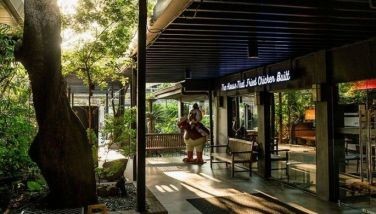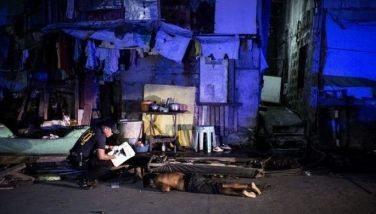Philippine Christmas starts with Simbang gabi
December 17, 2005 | 12:00am
The Philippine Christmas season started yesterday with the first novenary Mass known as Simbang gabi. Simbang gabi is actually a misnomer because the Masses are celebrated at four o’clock in the morning. The folk called it night Masses because at that time, it is still as dark as night. The Simbang gabi is something that shows what Filipinos did to Christmas. Christmas coincided with the rice harvest season when farmers have to be harvesting their crops at the crack of dawn. So to accommodate the farmers, the novenary Masses were celebrated at four o’clock in the morning. It became such a part of Christmas that even in urban centers like Metro Manila, people attend Masses at the ungodly hour of four in the morning.
The other thing that distinguishes the Filipino Christmas is the star lantern. Star lanterns are the main reflection of our state economy during Christmas. When Jose Rizal wanted to depict an unhappy Christmas, he wrote: "It was Christmas Eve but the town was sad. Not one paper lantern hung from the windows." In contrast, when the economy is great, the humble star lanterns become pyrotechnical splendors. The San Fernando town of Pampanga is famous for making fantastic star lanterns.
The star lantern evolved from the Mexican luminaria. In Mexico, people decorate their homes with an ordinary paper bag that was filled with sand and contained a candle. People placed them outside their homes as symbols that Saint Joseph and the Virgin Mary didn’t have to look for an inn to stay. They were welcomed in all the homes. They also had piñatas or pots that were filled with sweets for the children that were hung and later broken so that the children could get the sweets. Our parol was inspired by the luminaria and the piñata.
Other Catholic countries also have novenary Masses as a prelude to Christmas, but not at four o’clock in the morning. All have the Nativity, but only the Philippines has a star lantern in every home during Christmas and the beauty is that many homes literally make their own star lanterns. Christmas trees and Santa Claus were the American contributions to our Christmas, but they don’t really blend because pine trees are not a common tree and Santa Claus is not even dressed for our climate. During Spanish times, Christmas gifts were given and exchanged during the Feast of the Three Kings. Now, only the Casino Español still observes the tradition. Every Epiphany, three men attired as kings go around Manila on horseback to hand out gifts to the poor. We really wished that all cities in Metro Manila would do something to preserve the Three Kings’ tradition. Manila and Makati could make it part of their Epiphany celebration that officially marks the end of our Yuletide.
The other thing that distinguishes the Filipino Christmas is the star lantern. Star lanterns are the main reflection of our state economy during Christmas. When Jose Rizal wanted to depict an unhappy Christmas, he wrote: "It was Christmas Eve but the town was sad. Not one paper lantern hung from the windows." In contrast, when the economy is great, the humble star lanterns become pyrotechnical splendors. The San Fernando town of Pampanga is famous for making fantastic star lanterns.
The star lantern evolved from the Mexican luminaria. In Mexico, people decorate their homes with an ordinary paper bag that was filled with sand and contained a candle. People placed them outside their homes as symbols that Saint Joseph and the Virgin Mary didn’t have to look for an inn to stay. They were welcomed in all the homes. They also had piñatas or pots that were filled with sweets for the children that were hung and later broken so that the children could get the sweets. Our parol was inspired by the luminaria and the piñata.
Other Catholic countries also have novenary Masses as a prelude to Christmas, but not at four o’clock in the morning. All have the Nativity, but only the Philippines has a star lantern in every home during Christmas and the beauty is that many homes literally make their own star lanterns. Christmas trees and Santa Claus were the American contributions to our Christmas, but they don’t really blend because pine trees are not a common tree and Santa Claus is not even dressed for our climate. During Spanish times, Christmas gifts were given and exchanged during the Feast of the Three Kings. Now, only the Casino Español still observes the tradition. Every Epiphany, three men attired as kings go around Manila on horseback to hand out gifts to the poor. We really wished that all cities in Metro Manila would do something to preserve the Three Kings’ tradition. Manila and Makati could make it part of their Epiphany celebration that officially marks the end of our Yuletide.
BrandSpace Articles
<
>
- Latest
- Trending
Trending
Latest
Trending

By THE CORNER ORACLE | By Andrew J. Masigan | 13 hours ago

By SKETCHES | By Ana Marie Pamintuan | 13 hours ago
Latest
Recommended

April 1, 2025 - 5:52pm


























